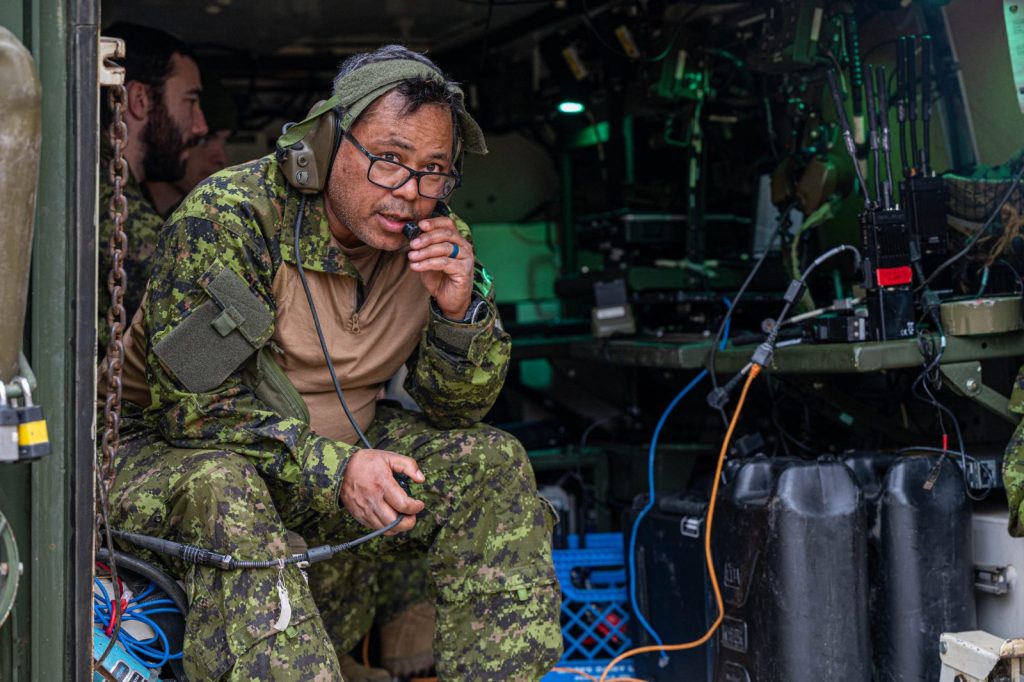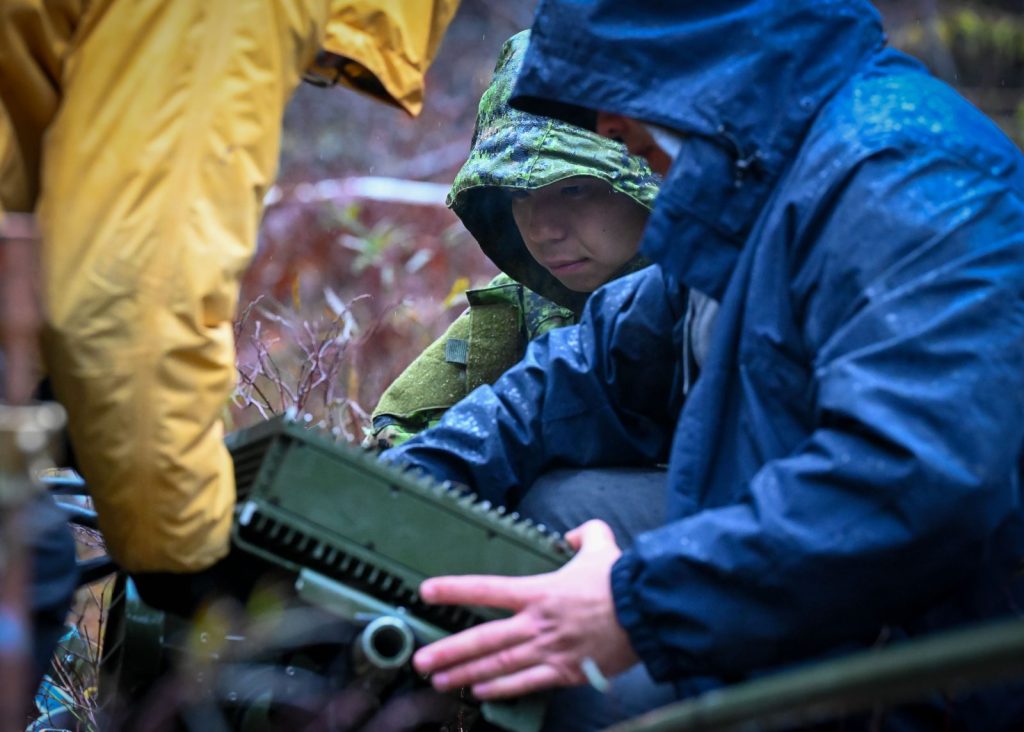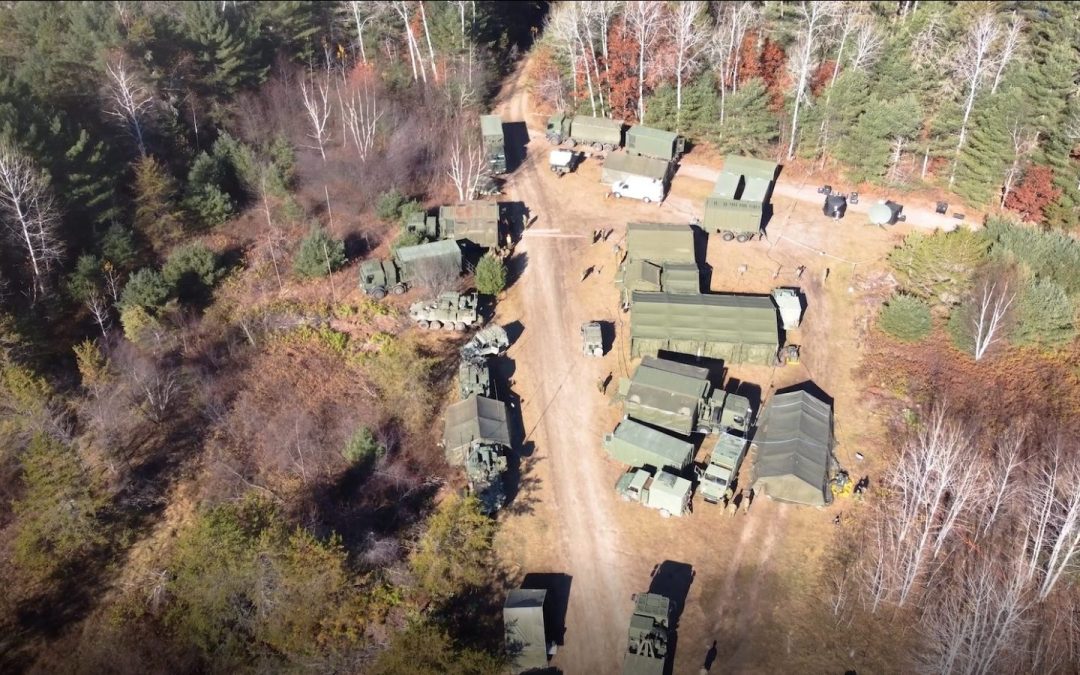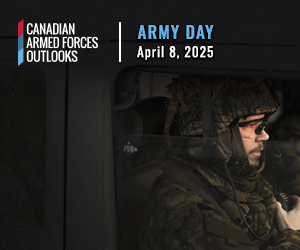by Staff
In the early days of the war in Ukraine, one of the more startling figures was the casualty rate of Russian command posts (CP). In the two months following Russia’s February 2022 invasion, Ukrainian forces located and destroyed “no fewer than 31 Russian command and communications posts,” according to a Forbes article that April. Within the first three months, reports emerged of the loss of more than 40 battle group, brigade, and division CPs.
“That was pretty much a wake-up call,” Major Nicolas Gonthier, the commanding officer of 2 Canadian Mechanized Brigade Group Headquarters and Signal Squadron (2 CMBG HQ & Sig Sqn), acknowledged. “The concept of employment of the signal squadron and the way we deploy our CP would simply not survive.”
The current structure of Canadian command posts is a holdover from the conflict in Afghanistan, where “everything was extremely centralized and focused on providing high digitization,” he noted. Most have gotten bigger and take longer to deploy and move. With the plethora of drones, sensors, electronic warfare, and the resulting high-resolution imagery, those large CPs, with their high digital signature, would be an easy target.
Gonthier, who assumed command of the squadron in July, and Colonel Jay MacKeen, commander of 2 CMBG, also newly arrived that summer, discussed the problem and quickly agreed, “we need to change this.”
In seeking greater mobility for CPs, the signal squadron had in the past wrestled with the conundrum of speed and mobility versus digitization. Would they have to compromise on connectivity to achieve increased survivability?
Last October, during Exercise Hermes Reach, they were challenged to try both — develop a highly interconnected but decentralized brigade CP that could deploy in under 30 minutes. And, as an added wrinkle, do so with less than half the normal complement of staff.
Gonthier, a signals officer with a degree in computer engineering, who spent six years with Canadian Special Operations Forces Command, set out three primary objectives for the team: Split the normally large CP of over 50 staff into smaller units, or nodes, that could deploy independently in the battlespace; have each of those nodes deployed and fully connected with all their normal applications functioning within 20 to 30 minutes; and, due to the ongoing struggles with recruitment and retention, especially in the signals trade, do it with far fewer operators.
“It was a pretty challenging objective,” he said. “How do you distribute the network at the same time as you deploy your various commands, and with less people.” As with any complex problem, the squadron quickly determined that “we had to completely change our mindset.”
As per the Army digital strategy aim of expanding “participative force development,” 2 CMBG HQ & Sig Sqn turned the two-week exercise into an experiment with the defence industry, inviting both current suppliers of the Army’s Land Command Support System and companies whose capabilities had caught their attention to participate.
“We have some capabilities within the unit that we use at maybe five percent of their capacity,” Gonthier noted, “so we reached out to industry and said, ‘We have your equipment, we know we can do more with it, but we need your help.’”

Working with defence companies, 2 Signals Squadron employed a combination of military software and open source tools to allow the CP to remain networked. Photo: Cpl Sarah Morley
With no blueprint for such a decentralized CP concept, the squadron first confirmed the ability of existing equipment and capability that had been validated the previous May on Exercise Maple Resolve, and then began generating a prototype. Within 45 days, they had a solution to trial.
Over three days on Ex Hermes Reach, members of the squadron worked alongside Canadian Armed Forces (CAF) technical experts and industry engineers, with reach-back to others in their companies, to experiment and integrate various capabilities before testing the concept in a five-day scenario-based “deployment” in the 4th Canadian Division Support Base Petawawa training area.
Employing a combination of the Tactical Assault Kit (TAK) suit of tools, including WinTAK (Windows) software and mapping frameworks and ATAK (Android) applications, as well as open-source tools to track information and communicate, the team was able to build a suite of applications to allow CP staff to collaborate virtually, sharing a common operating picture (COP) and accessing the battle management system.
They employed a mix of military and commercial SATCOM solutions and integrated mesh network radios to share data among the command “nodes.” The squadron set aside its cumbersome array of antennas and trialled “different types” of more automated masts that could be deployed in minutes, rather than hours, to extend their signals. That included static, high-altitude drones, tethered to a generator.
“We had various technical capabilities being integrated,” said Gonthier. “It gave us a whole new C4ISR architecture, as a first prototype, that could bring value to the staff and the commander.”
They were able to show that a CP staff could maintain access to the COP, track troops, and plan and manage the battle, talking without disruption to enablers and, critically, communicate without using the tactical radios that emit a strong signal.
“This allows us to reduce our footprint, to hide within the noise,” he said. “It’s not like in the past, where we’d have our antennas in one location, like the sun in the sky where it’s evident to find and target. We were able to distribute emissions across multiple locations.”
While dispersing the CP to reduce its signature was a driving objective, signature reduction was not a primary aim for this first trial. “Every time you put reducing emissions as a core requirement, you always end up with pen and paper,” Gonthier observed, so the focus was on “building the best architecture possible and then, in a future iteration of the concept, focusing on how we make this more resilient and less detectable.”
Ultimately, the experiment was able to show that a normally centralized CP could disperse and move, while remaining connected and highly digitized. And do it quickly. “Instead of taking hours, like six hours plus, we can do it within the first 30 minutes of deploying,” he said.
While the results were important, so too was the journey for the squadron and brigade. Innovation can be a slow-moving process in the military. The signal squadron had a prototype within two months and a follow-on iteration a month later.

Researchers with DRDC trialled a newer and lighter 30-meter high-capacity line of sight tower. Photo: Cpl Sarah Morley
The process has continued to evolve as more companies have engaged. From five at the outset, the squadron has now discussed technical solutions with 10 and counting.
Gonthier credited the collaboration between the military and industry for much of the momentum. “Initially, the expectation was, ‘Let’s do our best, let’s try to build a decentralized CP.’ But that concentration of industry engineers and members of the Sigs squadron was so effective, that within days we had a concept that was viable, and achieved high digitization and integration of the various capabilities from the various vendors.
“Sometimes industry has the engineering capacity to build equipment and prototypes rapidly, but they don’t necessarily know exactly what problems to tackle,” he added. “With this pairing, one of our corporals might say, ‘I wish that radio would do this.’ The engineer would make a phone call back to the company, and a firmware upgrade would be built, and then sent back the next day. It was beneficial to both — for us to be able to influence the type of product we received and how it was integrated, and for industry to see and hear problem sets from the troops themselves.”
The experiment could also inform Army acceptance of contracted services. The digital strategy recognizes the impact of Everything as a Service and the need to use it where applicable. There will always be a debate about what the Army needs to own and what can be provided by a third party, especially at the tactical edge, Gonthier observed, but “there are definitely some things that only industry can provide.
“There are some tasks that are very military specific, workflows that are very military specific, that the best solution we can have is a small software development team that builds a custom tool for ourselves,” he said. But for services like battle management suites and radios with large military markets, “there’s no value for [us] to build a custom solution.”
The CP experiment has generated strong interest among Army and CAF leadership, and will likely transition at some point into a framework for a brigade command post on Operation Reassurance in Latvia.
What began as a unit initiative has now become part of the Army’s modernization effort, Gonthier said, injecting a lot of energy into 2 Signal Squadron’s future digitization goals. “Lots of the lessons learned from our experimentation now feed into the bigger institutional capability development. And that is the goal for the future. We’re looking at having experimental units, where they’re going to keep doing innovation and experimentation as a permanent line of effort.
“I think from an institutional standpoint, we have perfect synchronization. We have bottom-up ideation and experimentation for a problem that affects us directly as practitioners and operators. At the same time, we have a digital strategy that gave us the leverage and the support we needed to conduct this. It was the perfect alignment … and now we have the perfect example of everything coming together.”




Mesh network are able to changing the data path on the fly so they are resilient to local failure, the whole network won’t stop if a node is removed.